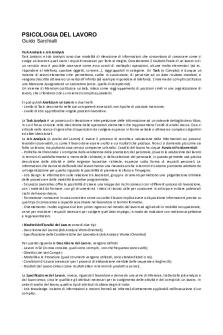OIM1 Task 1 Conducing a Needs Analysis PDF

| Title | OIM1 Task 1 Conducing a Needs Analysis |
|---|---|
| Course | Designing Curriculum I |
| Institution | Western Governors University |
| Pages | 4 |
| File Size | 93.5 KB |
| File Type | |
| Total Downloads | 11 |
| Total Views | 140 |
Summary
Task 1 Conducting a Needs Analysis for a 5th grade language arts classroom...
Description
Karlie Johnson OIM1 Task 1: Conducting a Needs Analysis 6/3/21 Section A A1: An instructional unit I previously taught that required prior student knowledge was in regards to spelling and unique spelling patterns. According to the Nebraska State Department of Education, standard LA 5.1.3a states students will “know and apply phonetic and structural analysis (e.g., Greek and Latin roots and affixes, multi-syllable words) when reading, writing, and spelling grade level text” (Nebraska State Department of Education, 2014). The student focus in this particular instructional unit is Learning Intention 2b, which states “I am learning about common affixes (prefixes and affixes).” The prior knowledge that students should have before entering into this unit of study is knowing how to spell the two prefixes ‘un-’ and ‘re-’ and also how to add the two prefixes correctly to a root word. In order to use prefixes to understand the meaning of the word, students first have to understand what the prefix is and how to spell the root word that goes with it. As the unit progresses, students will understand that the prefix ‘re-’ means “back” or “again”. They will also understand that the prefix ‘un-’ means “not”. After completing this unit of study, students should be able to use the prefixes ‘un-’ and ‘re-’ to help them better understand the meaning of a word. Students should also be able to use words with the two prefixes in their own writing.
A2: The instrument I used to test students’ prior knowledge of the two prefixes was a spelling pretest. I pre-tested students over twenty words that included the prefixes ‘un-’ and ‘re-’.
Students then received a list of the words and self-checked their pre-test to see which words they wrote correctly and also which words they misspelled. Students were then instructed to identify 12 words that they misspelled from the pre-test to be assessed a week later during the spelling test. If students spelled all of the words correctly on the pre-test, they were instructed to use the 12 challenge words on the spelling test. These challenge words also included the prefixes ‘un-’ and ‘re-’. By pre-testing students’ knowledge on prefixes, they are working towards the ‘know’ portion of the state standard, which states “know phonetic and structural analysis when spelling grade level text” (Nebraska State Department of Education, 2014).
A3: After conducting the spelling pre-test with the students, I gathered data in regards to how many students spelled all of the words correctly and also which words students misspelled. Out of my 26 students, there were five students that spelled all of the words on the pre-test correctly. This means there were 21 students who were not meeting the state standard of “knowing phonetic and structural analysis when spelling grade level text” with the two prefixes ‘un-’ and ‘re-’ (Nebraska State Department of Education, 2014). From this data, I analyzed that there was significant growth that needed to be made for all 26 of my students to meet the objective. In order for all of my students to meet the standard, 21 of my students would need to learn how to correctly spell their missed words and then spell them correctly on the final spelling assessment. For my students to close the gap, they would need to prove that they can consistently spell 5th-grade level words with the prefixes ‘un-’ and ‘re-’ correctly. The standard also states that students should be able to know and apply those skills when reading and writing. This will
require students to have knowledge of the meaning of the prefixes and also how to use them correctly.
Bibliography Nebraska State Department of Education. (2014). English Language Arts Education. Nebraska Department of Education. https://www.education.ne.gov/ela/...
Similar Free PDFs

Task 1 - Qualitative analysis
- 4 Pages

Chapter 3 - Needs Analysis
- 8 Pages

JNT2-Needs Analysis (Passed)
- 18 Pages

JNT2 - Needs Analysis
- 7 Pages

Needs Analysis Questionnaire
- 4 Pages

C200 Leadership Analysis Task 1
- 13 Pages

Rjet Task 1 Financial Analysis 1
- 12 Pages

Task Analysis e Job Analysis
- 3 Pages

Task Analysis e Job Analysis
- 3 Pages

D081 Task 1 - Grade: a
- 4 Pages
Popular Institutions
- Tinajero National High School - Annex
- Politeknik Caltex Riau
- Yokohama City University
- SGT University
- University of Al-Qadisiyah
- Divine Word College of Vigan
- Techniek College Rotterdam
- Universidade de Santiago
- Universiti Teknologi MARA Cawangan Johor Kampus Pasir Gudang
- Poltekkes Kemenkes Yogyakarta
- Baguio City National High School
- Colegio san marcos
- preparatoria uno
- Centro de Bachillerato Tecnológico Industrial y de Servicios No. 107
- Dalian Maritime University
- Quang Trung Secondary School
- Colegio Tecnológico en Informática
- Corporación Regional de Educación Superior
- Grupo CEDVA
- Dar Al Uloom University
- Centro de Estudios Preuniversitarios de la Universidad Nacional de Ingeniería
- 上智大学
- Aakash International School, Nuna Majara
- San Felipe Neri Catholic School
- Kang Chiao International School - New Taipei City
- Misamis Occidental National High School
- Institución Educativa Escuela Normal Juan Ladrilleros
- Kolehiyo ng Pantukan
- Batanes State College
- Instituto Continental
- Sekolah Menengah Kejuruan Kesehatan Kaltara (Tarakan)
- Colegio de La Inmaculada Concepcion - Cebu





